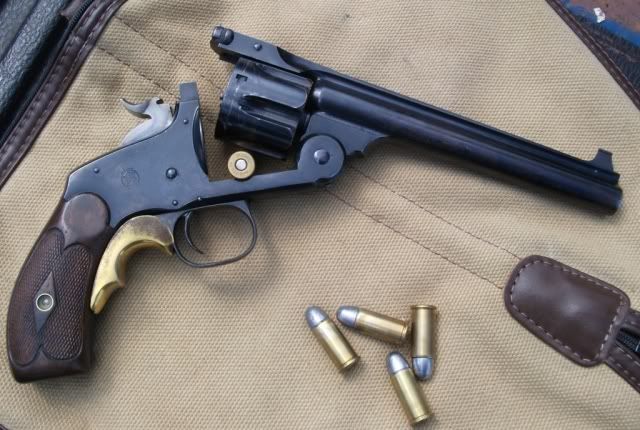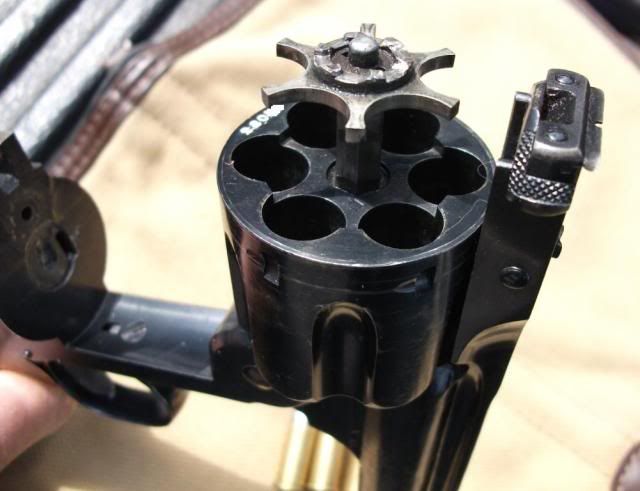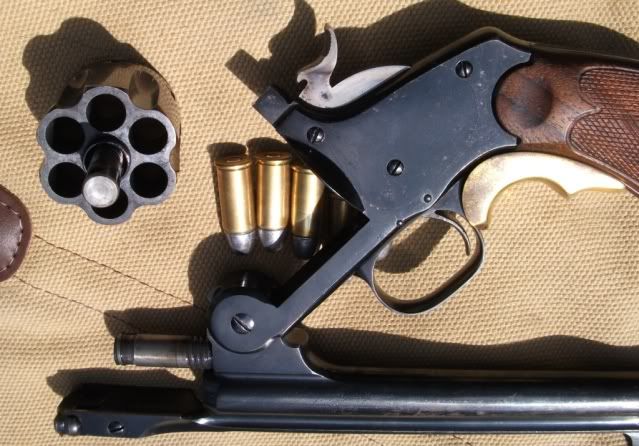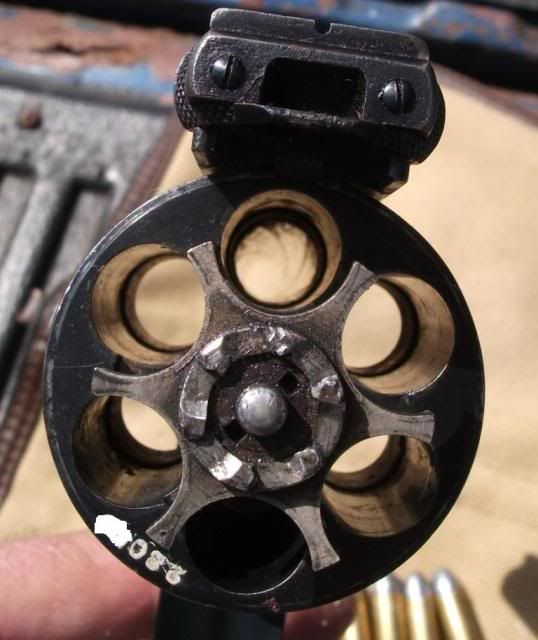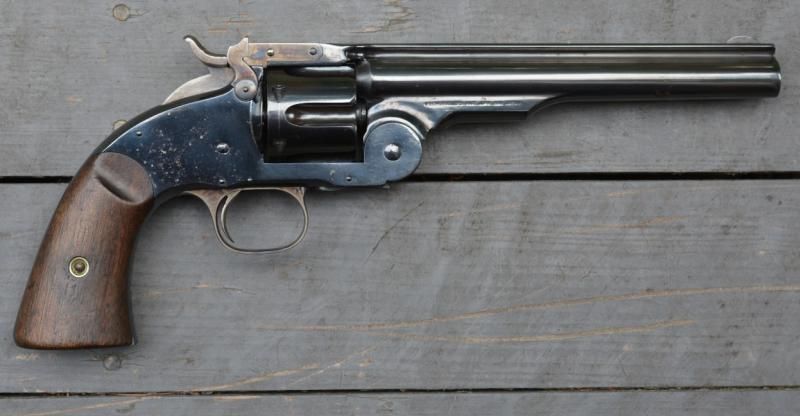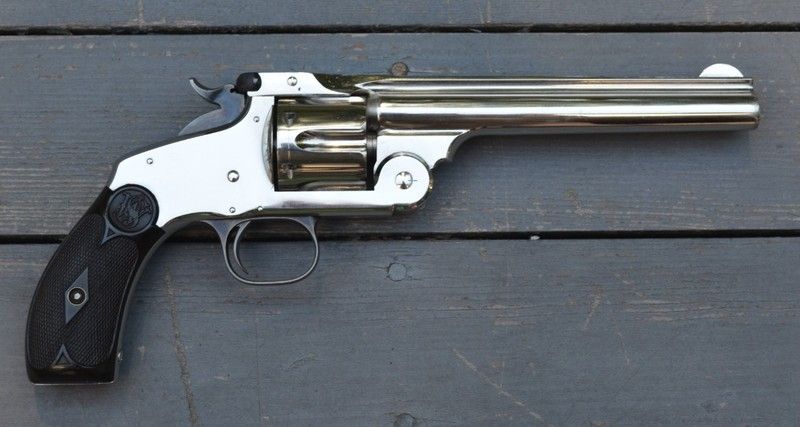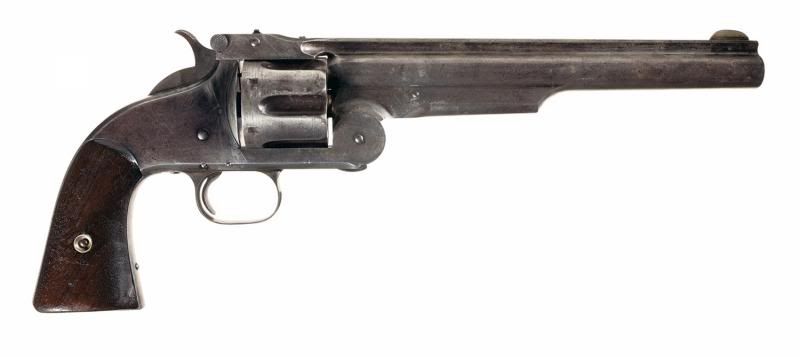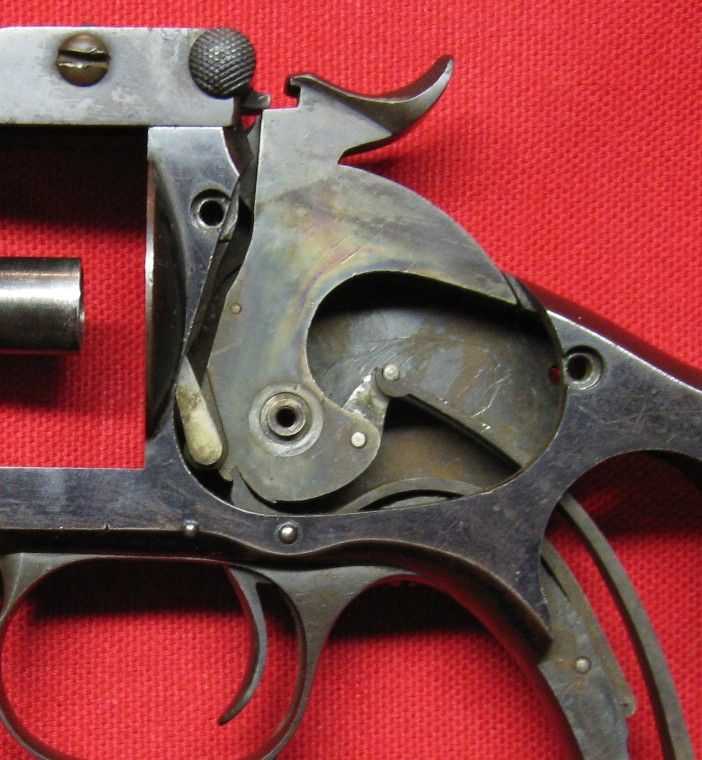Howdy
Let's see, at last count I have five Antique Number 3 Top Breaks, so I think I am qualified to comment on this thread.
First off, yes the Schofield was just one of five separate Top Break models built on the Number 3 sized frame. I always say, all Schofields are Number 3s, but not all Number 3s are Schofields.
Let's go through four of the five separate Number Three Top Breaks.
2nd Model Russian, 44 Russian caliber, made in 1875
1st Model Schofield, 45 Schofield caliber, also made in 1875
New Model Number Three, the epitome of S&W Top Break designs. 44 Russian caliber, made in 1882, refinished at the factory in 1965
44 Double Action. Top one is a target model, made in 1895, bottom one is a plain jane standard 44 Double Action, made in 1881. Both are chambered for 44 Russian.
Not in my collection yet, the American model. 44 S&W American caliber, an obsolete round using a heeled bullet. This was the first of the large frame S&W Top Breaks, introduced in 1870, soon after the Rollin White patent on bored through cylinders for cartridges expired. In fact, the American model was the first Top Break of any size that S&W made. The US Army bought 1000 of these, in 1870; 800 blued and 200 nickel plated, several years before they bought the Colt Single Action Army.
****************
Let's go through some of the comments so far.
Yes, absolutely, the Top Breaks are much faster to empty and reload than a Colt. Pop the latch, drop the barrel and all the empties are ejected. If you're careful you can lower the barrel a little bit slowly and retain any unfired rounds, while ejecting the empties. Then reload while it is open. Yes, hands down, much faster to reload than a Colt, which has to have the empties punched out one at a time, then the chambers loaded again one at a time. Can't recall getting an empty stuck under the ejector, maybe I am used to shooting them. If you flick the gun a little bit sideways while lowering the barrel, everything will fall out and nothing will get stuck. By the way, get an empty stuck under the ejector of a modern side swing revolver and you are just as out of luck.
No, they are not as strong as the solid frame Colt. No question about that. Yes, they can wear with time. That blue 44 DA of mine was a little bit loose in the lockup when I bought it. What do you want for a gun made in 1881? An expert smith was able to tighten it up for me. But shooting mild 'cowboy' loads, I doubt if you are going to loosen up one of the modern Italian replicas all that fast. I know a few guys who shoot them A LOT in CAS, and they have not loosened up. 'Extremely weak'? Not hardly.
I always get a kick out of those who claim the Top Breaks were more complicated than a Colt. Don't worry, you are in good company, the Army thought so too. Let's look inside one. This is my Russian. Super complicated huh? Hammer, trigger, pawl and a couple of springs. Not visible is the bolt, a simple L shaped part actuated by the trigger, not the hammer like a Colt. Anyone who has ever messed with the bolt on a Colt knows what a complicated, fussy part it is. Sorry, I just don't buy this stuff about how complicated the lockwork of the Top Break Smiths were.
Let's see, what else. Sight regulation. Guess what? The originals tended to shoot high too. The Italians are simply mimicking the sights of the originals. I always remember when shooting my Top Breaks at a match to hold low. Problem solved. Sights are a little bit difficult to see? No more difficult than the V groove on the early Colts, at least not in my opinion.
The Colt is better balanced? Is that why some of the records made with New Model Number Threes at the Bisley range in England are still standing? Shot against Colt's entry into target shooting, the Bisley model?
Sorry fellas, obviously I am a huge fan of the old #3 Top Breaks. Just had to interject a dissenting opinion. Don't get me wrong, I love to shoot my Colts too, but I really love shooting my old Top Breaks.
Yes, I only shoot my Top Breaks with Black Powder, would not dream of putting Smokeless through them. However with the modern Italian replicas, Smokeless is no problem. Just don't put Ruger Only loads through them. And unfortunately, because of a design change when the Italians stretched the cylinders to accept longer rounds such as 45 Colt and 44-40, the modern replicas do not handle Black Powder very well.
************
Slamfire: Sorry to break it to you, but your pal's New Model Number Three with target sights is not all that rare. If it were a New Model Number Three 38 Winchester, chambered for 38-40, it would be extremely rare, only 74 were ever made. If it were a New Model Number Three Frontier (44-40) it would be pretty rare, 2072 were made. The actual New Model Number Three Target Model was chambered for two specific smaller caliber target cartridges, to reduce recoil over the standard 44 Russian cartridges. 38-44 (not to be confused with the predecessor of the 357 Mag from the 1930s) was an overly long version of the 38 S&W. The round extended the full length of the cylinder, there was no free bore in the chambers. Same with the 32-44 round, it too extended the full length of the chamber. Even so, the Target Models are not all that rare, 4,333 were made.
Notice how the target sights are the same as on my 44 DA target model. Pinned front sight and adjustable blade rear sight. Not all that rare, or else I got a terrific deal on it.
It is a little bit difficult for me to know exactly what cartridge your pal's revolver is chambered for, the rounds look a little bit longer than 44 Russian. But they are clearly a big bore, not a smaller 38 or 32 caliber.
According to the Standard Catalog of Smith and Wesson by Supica and Nahas, a New Model Number Three with target sights will command about 10% more value than the same revolver with fixed sights.

